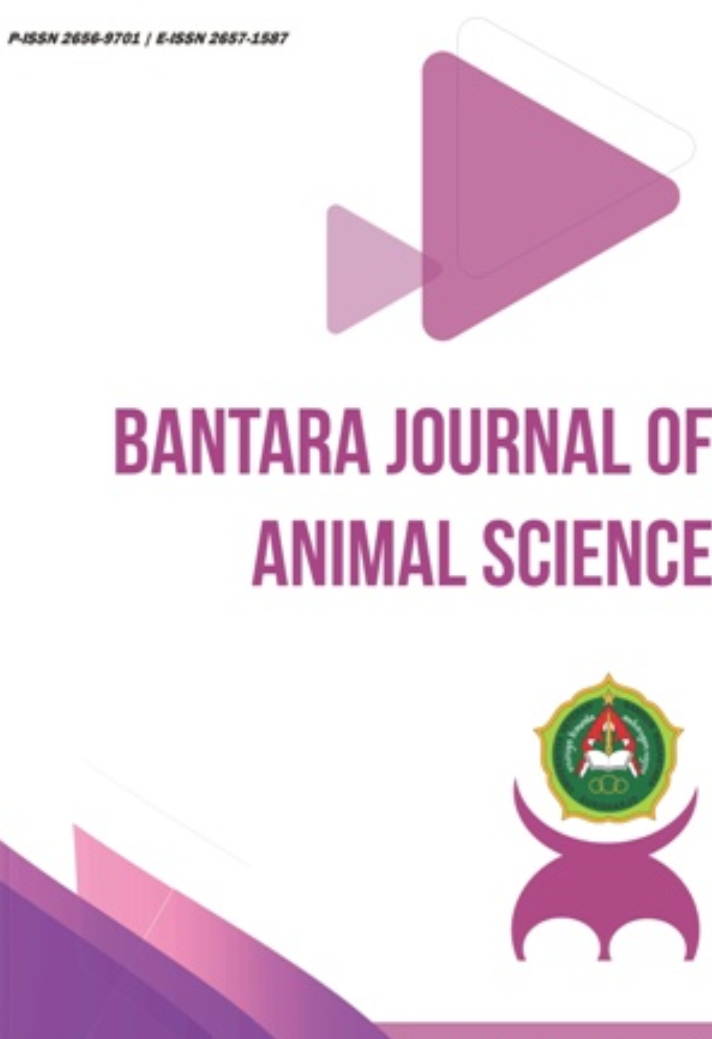Utilization of Shrimp Waste (Litopenaeus vannamei) as Powdered Broth: Effects of Roasting Duration on Protein Content, Color Changes, and FTIR
DOI:
https://doi.org/10.32585/bjas.v6i1.5410Keywords:
FTIR, protein content, powdered broth, vaname shrimpAbstract
Shrimp waste, such as shells and heads, can still be utilized to create powdered broth commonly used as a flavor enhancer in food. This research is intriguing because shrimp waste can substitute for MSG (monosodium glutamate). This study aims to investigate the impact of the roasting process duration on the protein content and physical properties of powdered broth derived from shrimp heads and shells. The primary treatment in this study involves varying roasting times, divided into four groups: K1 (30 min), K2 (40 min), K3 (50 min), and K4 (60 min). The protein content aligns with the quality requirements for flavor enhancers. Additionally, the L* color value ranges from 65-12-71.33, the a* value ranges from 2.23-5.61, and the b* value ranges from 22.71-25.32. Due to the prolonged drying process, the peaks of amide A, amide B, amide I, amide II, and amide III shift. The opportunity to utilize shrimp waste in the form of shells and heads for powdered broth is wide open for commercialization.
Downloads
References
Bawinto, A. (2015). Analisa Kadar Air, pH, Organoleptik, dan Kapang pada Produk Ikan Tuna (Thunnus Sp) Asap, di Kelurahan Girian Bawah, Kota Bitung, Sulawesi Utara. Jurnal Media Teknologi Hasil Pertanian, 3(2), 55-65.
Danesh Pajooh, A. M., & Mohammadi, Z. (2024). Facilitated Method for Production of Chitin and Chitosan from Shrimp Shells. Caspian Journal of Engineering Modern Technologies, 1(1), 7-13.
Guerrero-Rodríguez, B., Jamett, A., Layana, L., Berrezuela-Palacios, C., Cortez-Gómez, S., Briceño, S., & Lobos, J. (2021). Graphene functionalized with partially deacetylated chitin extracted from shrimp shell waste. Acta Microscópica, 30(2), 1-12.
Hasdar, M., Rahmawati, Y. D., Erwanto, Y. & Rusman (2019). Quality Protein, Viscosity, Gel Strength and Structural Morphology of Sheepskin Gelatin Catalyzed HCl With Different Concentrations. In IOP Conference Series: Earth and Environmental Science (Vol. 334, No. 1, p. 012049). IOP Publishing.
Hasdar, M., Wadli, W., & Meilani, D. (2021). Rancangan Acak Lengkap dan Rancangan Acak Kelompok pada pH Gelatin Kulit Domba Dengan Pretreatment Larutan NaOH. Journal of Technology and Food Processing (JTFP), 1(01), 17-23.
Irfan A.M & Lestari N. (2022). “Pemodelan Matematis Kinetika Pengeringan Cabai Merah Dengan Perlakuan Blansing Suhu Rendah.” Jurnal Ilmiah Rekayasa Pertanian dan Biosistem 10(1),98-1: 18.
Liu, J., Yang, X., Liu, H., Jia, X., & Bao, Y. (2021). Mixed biochar obtained by the co-pyrolysis of shrimp shell with corn straw: Co-pyrolysis characteristics and its adsorption capability. Chemosphere, 282, 131116.
Maryam & Andi. (2023). “Analisis Kimia Dan Organoleptik Bubuk Penyedap Rasa Berbasis Limbah Udang Sebagai Alternatif Penyedap Alami.” Jurnal Agroindustri Pangan 2(2): 68–85.
Murali, S., Delfiya, D. A., Kumar, K. S., Kumar, L. R., Nilavan, S. E., Amulya, P. R., Krishnan, V.S., Alfiya, P.V., & Samuel, M. P. (2021). Mathematical modeling of drying kinetics and quality characteristics of shrimps dried under a solar–LPG hybrid dryer. Journal of Aquatic Food Product Technology, 30(5), 561-578.
Mursyid, Indriyani, & Herlanda.O. (2022). “Perbedaan Karakteristik Tepung Umbi Suweg ( Amorphophallus Campanulatus ) Berdasarkan Suhu Dan Waktu Steam Blanching.” 7(6): 5693–5703.
Muslimin, I., Syahrul., & Metusalach. (2022). Effect of Preparation Treatments on the Physico-Chemical Characteristics of Nile Tilapia (Oreochromis niloticus) Protein Concentrate. International Journal of Environment, Agriculture and Biotechnology, 7 (1), 61-67.
Ningsih, I. Y. (2018). Pengembangan Produk Penyedap Rasa dan Tepung Jamur Tiram di Desa Dawuhan dan Kelurahan Dabasah Kabupaten Bondowoso. Warta Pengabdian, 12(3), 307.
Pagarra, Halifah, Hartati, Wardhana, M.I., & Sahribulan. (2022). “Olahan Bumbu Bubuk Kaldu Jamur Tiram Di Desa Sokkolia Kecamatan Bontomarannu Kabupaten Gowa.” Sasambo: Jurnal Abdimas (Journal of Community Service) 4(4): 681–89.
Pramudya, P.A., Fahmi, A.S., & Rianingsiih.L. (2022). “Optimasi Suhu Dan Waktu Pengeringan Nori Berbahan Baku Ulva Lactuca Dan Gelidium Sp. Dengan Penambahan Perisa Bubuk Kepala Udang Menggunakan Response Surface Methodology.” Jurnal Ilmu dan Teknologi Perikanan Vol 4 no 2: 10.
Rahayu, A. P., Islami, A. F., Saputra, E., Sulmartiwi, L., Rahmah, A. U., & Kurnia, K. A. (2022). The impact of the different types of acid solution on the extraction and adsorption performance of chitin from shrimp shell waste. International Journal of Biological Macromolecules, 194, 843-850.
Safithri, Mega, Tarman, K., Suptijah,P & Widowati, N. (2019). “Karakteristik Fisikokimia Kolagen Larut Asam Dari Kulit Ikan.” 22.
Saputra, D. D., & Mursyid, M. (2023). The Effect of Acetic Acid Concentration on the Physicochemical Properties of Shrimp Shell Powder (Fenneropenaeus Merguiensis de Man): Shrimp shell powder. Journal of BiGME, 3(1), 36-44.
Sintya., Maryam, A., & Hamdi. (2023). Analisis Kimia dan Organoleptik Bubuk Penyedap Rasa Berbasis Limbah Udang (Fenneropenaeus merguiensis) Sebagai Alternatif Penyedap Alami. Jurnal Agroindustri Pangan, 2(2), 68-85.
Yuliawaty. S.T., & Susanto, W. H. (2015). Pengaruh Lama Pengeringan dan Konsentrasi Maltodekstrin Terhadap Karakterisktik Fisik Kimia dan Organoleptik Minuman Instan daun Mengkudu (Morinda citrifolia L). Jurnal Pangan dan Agroindustri 3(1): 41-52
Downloads
Published
How to Cite
Issue
Section
License
Copyright (c) 2024 DIAH EKA MAULINA, Nurwati, Muhamad Hasdar

This work is licensed under a Creative Commons Attribution-NonCommercial-ShareAlike 4.0 International License.





